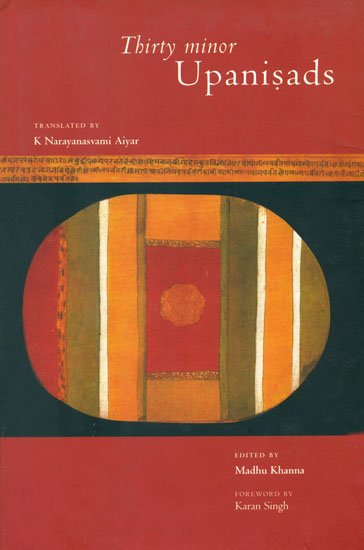Thirty minor Upanishads
by K. Narayanasvami Aiyar | 1914 | 95,228 words
This book contains the English translation of thirty minor Upanishads.—Fourteen belonging to Vedanta, two are categorised as Physiological, three are Mantra, two are Sannyasa and the remaining nine are categorised as Yoga-Upanishads. These Upanishads are properly defined as the Aranya-portion of the Vedas (most ancient Hindu scriptures) and are so-...
Vajrasucika Upanishad of Samaveda
I now proceed to declare the vajrasūci—the weapon that is the destroyer of ignorance—which condemns the ignorant and praises the man of divine vision.
There are four castes—the brāhmaṇa, the kṣatriya, the vaiśya, and the śūdra. Even the smṛtis declare in accordance with the words of the vedas that the brāhmaṇa alone is the most important of them.
Then this remains to be examined. What is meant by the brāhmaṇa? Is it a jīva? Is it a body? Is it a class? Is it jñāna? Is it karma? Or is it a doer of dharma?
To begin with: is jīva the brāhmaṇa? No. Since the jīva is the same in the many past and future bodies (of all persons), and since the jīva is the same in all of the many bodies obtained through the force of karma, therefore jīva is not the brāhmaṇa.
Then is the body the brāhmaṇa? No. Since the body, as it is made up of the five elements, is the same for all people down to caṇḍālas,[1] etc., since old age and death, dharma and adharma are found to be common to them all, since there is no absolute distinction that the brāhmaṇas are white-coloured, the kṣatriyas red, the vaiśyas yellow, and the śūdras dark, and since in burning the corpse of his father, etc., the stain of the murder of a brāhmaṇa, etc., will accrue to the son, etc., therefore the body is not the brāhmaṇa.
Then is a class the brāhmaṇa? No. Since many great Ṛṣis have sprung from other castes and orders of creation—Ṛṣyaśṛṅga was born of deer; Kauśika, of Kuśa grass; Jāmbuka of a jackal; Vālmīki of valmīka (an ant-hill); Vyāsa of a fisherman's daughter; Gautama, of the posteriors of a hare; Vasiṣṭha of Ūrvaśi[2]; and Agastya of a water-pot; thus have we heard. Of these, many Ṛṣis outside the caste even have stood first among the teachers of divine Wisdom; therefore a class is not the brāhmaṇa.
Is jñāna the brāhmaṇa? No. Since there were many kṣatriyas and others well versed in the cognition of divine Truth, therefore jñāna is not the brāhmaṇa.
Then is karma the brāhmaṇa? No. Since the prārabdha[3], sañcita[4], and āgami[5] karmas are the same for all beings, and since all people perform their actions as impelled by karma, therefore karma is not the brāhmaṇa.
Then is a doer of dharma (virtuous actions) the brāhmaṇa? No. Since there are many kṣatriyas, etc., who are givers of gold, therefore a doer of virtuous actions is not the brāhmaṇa.
Who indeed then is brāhmaṇa? Whoever he may be, he who has directly realised his Ātmā and who is directly cognizant, like the myrobalan in his palm, of his Ātma that is without a second, that is devoid of class and actions, that is free from the faults of the six stains[6] and the six changes,[7] that is of the nature of truth, knowledge, bliss, and eternity, that is without any change in itself, that is the substratum of all the kalpas, that exists penetrating all things that pervades everything within and without as ākāś, that is of nature of undivided bliss, that cannot be reasoned about and that is known only by direct cognition. He who by the reason of having obtained his wishes is devoid of the faults of thirst after worldly objects and passions, who is the possessor of the qualifications beginning with śama[8], who is free from emotion, malice, thirst after worldly objects, desire, delusion, etc., whose mind is untouched by pride, egoism, etc., who possesses all these qualities and means—he only is the brāhmaṇa.
Such is the opinion of the vedas, the smṛtis, the itihāsa and the purāṇas. Otherwise one cannot obtain the status of a brāhmaṇa. One should meditate on his Ātmā as Saccidānanda, and the non-dual Brahman. Yea, one should meditate on his Ātmā as the Saccidānanda Brahman. Such is the Upaniṣad.
Footnotes and references:
[1]:
The lowest class of persons among the Hindūs.
[3]:
[4]:
The karmic affinities generated by us in our former lives and collected together to be enjoyed in our future lives.
[5]:
The affinities generated by us in our present life to be enjoyed hereafter.
